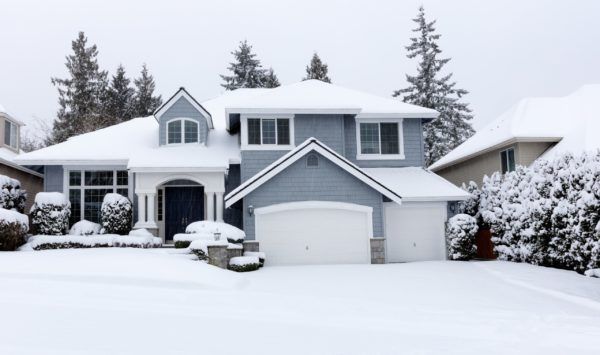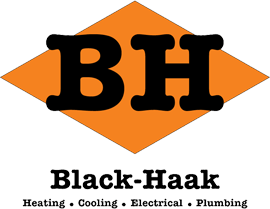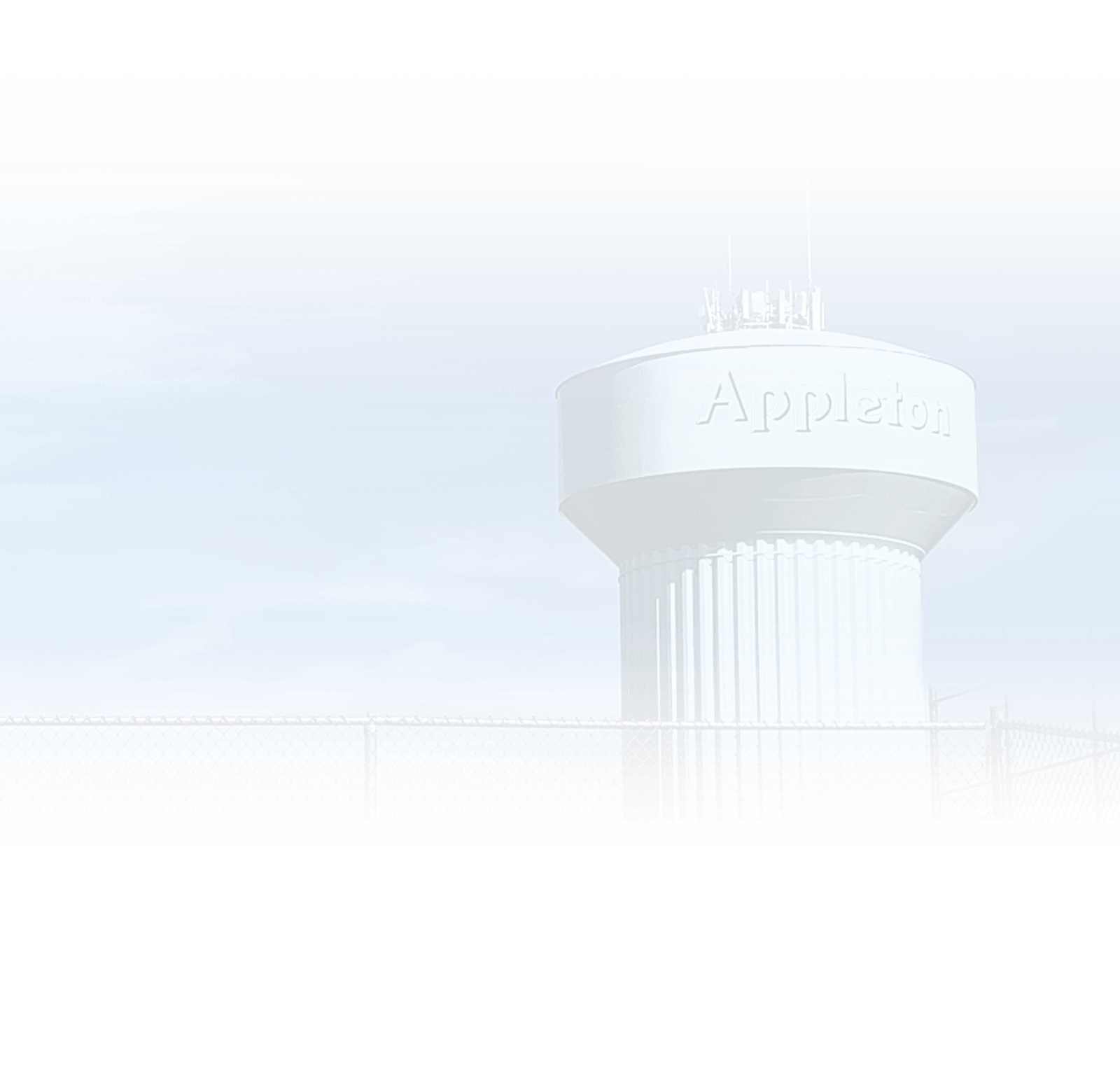
The winters in the Fox Valley area and the rest of Wisconsin can be bitterly cold with average daily lows in January hovering around 9 degrees and highs that rarely reach above freezing. There are also plenty of days every year when the temperature plunges well below zero. These freezing temperatures can easily allow water to freeze inside your pipes and potentially cause the pipes to burst. The good news is that you can easily prevent your pipes from freezing simply by following all of these steps, and if you do encounter a burst pipe or any other plumbing issue, we can help.
Make Sure Your Pipes Are Wrapped
Your water lines are most likely made of copper. This is because copper is non-reactive and won’t rust or corrode like other metals. The only issue is that copper has almost zero insulating ability. If copper pipes are exposed to cold air, the cold will almost instantly penetrate through the pipe and lower the temperature of the water inside to the point where it can begin to freeze.
Your home’s water lines run through the length of your basement and crawlspace, and these are the pipes that are most likely to freeze since these areas typically stay much colder than the rest of the home. The first step to preventing this from happening is to make sure that all of the pipes in these areas are fully wrapped with pipe insulation. This helps create a barrier that blocks cold air from reaching your pipes and thus helps prevent them from freezing.
If your water lines aren’t insulated, this is something you should definitely fix before the worst of the winter cold sets in. Foam pipe insulation is available that slides directly over the side of the pipe, making it easy to ensure everything is fully wrapped. All of the pipes need to be fully wrapped and secured with no gaps in between the insulation. Even a small gap can still allow cold air to penetrate through the copper and cause the pipe to freeze.
Check the Insulation in Your Basement or Crawlspace
You also need to make sure that your basement or crawlspace is well-insulated and doesn’t have any cracks or gaps where cold air could leak in. This is a common issue in crawlspaces and especially in older houses since foundations often crack over time. If there are any cracks, they will need to be fully sealed to ensure no cold air can seep through.
Most crawlspaces also have air vents, which are important for preventing humidity from building up during the summer and leading to mold issues or water damage. During the winter, these air vents need to be fully covered and blocked. If not, all of the cold air rushing in through them can quickly lower the temperature enough for your pipes to freeze.
Drain and Cover Your Hose Bibs
You’ll also need to take steps to ensure that the hose bibs outside your house can’t freeze. Start by unhooking all of your hoses. If you leave a hose attached, water can get trapped inside the bib and may freeze. You should then go inside and turn off the shut-off valve for each hose bib. You’ll then want to go back outside and open up the bib to drain any water that remains inside the line. Finally, you should put a faucet cover over each bib to insulate it from the cold air.
Always Keep the Heat Running
The temperature inside your house should never drop below 55 degrees in the winter. Even if the temperature on your thermostat registers 50 degrees, there will always be some places inside the house that are far colder than this. If there are any air leaks in your walls or around your windows, cold air can get inside the exterior wall and drop the temperature to below freezing. To prevent this from happening, it is recommended that you always leave your heat running during winter and your thermostat set no lower than 60 degrees.
Leave Your Cabinet Doors Open
During extreme cold snaps where the temperature drops below 0 degrees, you will want to take additional steps to ensure your pipes can’t freeze. At these temperatures, water can often freeze inside the lines running to your sinks even if your thermostat is set to 60 degrees or higher.
One way to help prevent this is to keep the cabinet doors under your kitchen and bathroom sink open whenever the weather is much colder. This helps by ensuring the hot air from your heating system can better circulate underneath the sink. If you keep the door closed, no heat can get in and the area under the sink can drop below freezing even if the rest of the house is warm. You should also periodically measure the temperature under the sink and use space heaters or fans to provide additional heating if it starts to get too cold.
Turn Your Faucets On
Pipes freeze because they are always filled with standing water whenever you’re not using your plumbing system. Standing water will begin to freeze at 32 degrees, but the temperature has to be much colder for running water to ice up. Keeping your faucets open so that there is always a trickle of water running is one of the easiest ways to ensure that they won’t freeze. This usually isn’t necessary, but it is definitely a good idea if the forecast predicts below-zero temperatures. In this case, you should slightly open every faucet to ensure water is always flowing through your pipes.
Winterize Your Plumbing if You Plan to Be Gone for Long
If you plan on being away for more than a week or so, it is always a good idea to have a plumber fully winterize your home. If not, there is always a decent chance that you could come back to a flooded home or your interior fully coated with ice.
Winterizing involves shutting the water supply off and making sure that no water is left in any of your pipes. After closing your main water shut-off valve, a plumber will open up all fixtures to drain as much water from them as possible. If even one fixture is closed, it can create a vacuum that traps water inside the pipes.
The system is then blown out using a compressor to remove any remaining water from the pipes. Your toilets are also fully drained to prevent water in the tank or bowl from freezing and cracking the porcelain. Your water heater will also be shut off and drained. Lastly, antifreeze is added to your drains to ensure the water in the P-trap can’t freeze. If any water remains inside the toilet tank, it will also need antifreeze.
If you need any help winterizing your plumbing or ensuring your pipes don’t freeze, you can count on the expert team at Black-Haak. We have been serving residents of Greenville and the Fox Valley for more than 60 years and are ready to help with any of your plumbing needs. Should you have any issues with a frozen or ruptured pipe, we can take care of that as well.
We specialize in pipe repairs and also offer a range of other plumbing services including drain cleaning, toilet installation, and sump pump repair. Our plumbers also service and install water heaters, water softeners, and water filtration systems. Contact us today to schedule an appointment or if you have any questions.

